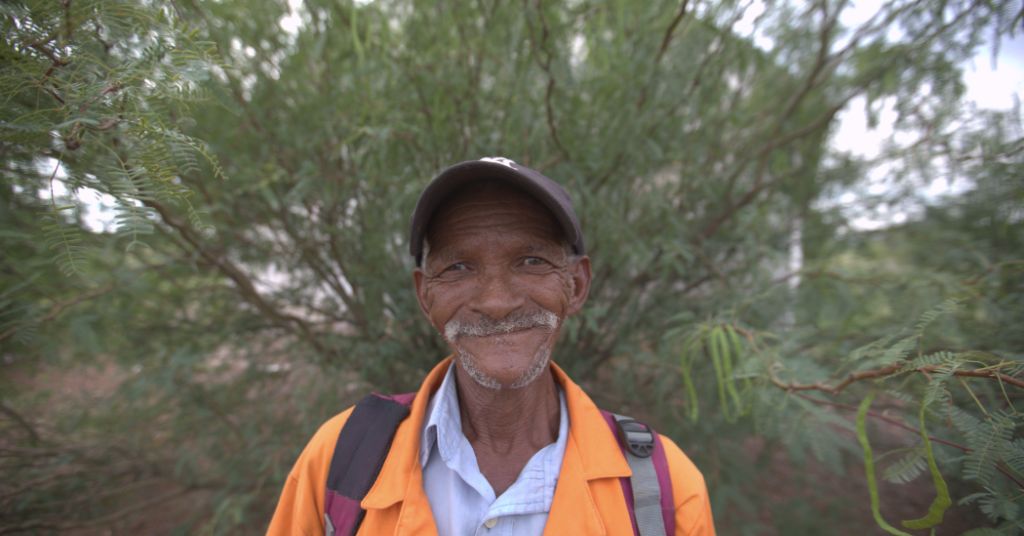The History of the Mesquite Tree in South Africa

The mesquite tree (Prosopis species) is a thorny, drought-resistant tree native to the arid and semi-arid regions of the Americas. However, today, it is widespread in several parts of the world, including South Africa. Its journey to South Africa is a fascinating tale of well-intended introduction, unintended consequences, and ongoing efforts to manage its impact on the environment.
Origins and Introduction to South Africa
Mesquite trees are native to regions such as Mexico, the southwestern United States, and parts of South America. They have been used for centuries by indigenous peoples for their nutritious seed pods, durable wood, and ability to provide shade in harsh environments.
In the late 1800s and early 1900s, mesquite trees were introduced to South Africa, primarily to combat desertification, serve as windbreaks, and provide fodder for livestock. The South African climate, particularly in arid regions such as the Northern Cape and parts of the Karoo, was seen as ideal for mesquite, given its ability to thrive in dry conditions with minimal water.
Spread and Unintended Consequences
While mesquite initially seemed like a beneficial addition, it quickly became apparent that the tree was highly invasive. Its deep roots allowed it to outcompete native vegetation for water, leading to the degradation of grasslands that were vital for livestock farming. Additionally, the plant’s prolific seed production and dispersal, often facilitated by animals consuming the pods, caused rapid spread across vast areas.
By the mid-20th century, mesquite had become a major problem in South Africa, especially in provinces like the Northern Cape, Limpopo, and parts of the Free State. The dense thickets it formed not only reduced available grazing land but also led to the loss of biodiversity, as native plants struggled to survive.
Efforts to Control and Manage Mesquite
Recognizing its status as an invasive species, South African authorities began implementing control measures to curb its spread. Mesquite is now classified as a Category 1b invasive species under the National Environmental Management: Biodiversity Act (NEM:BA), meaning it must be controlled and removed in certain areas.
Several methods have been employed to manage mesquite infestations:
- Mechanical Control – Cutting down trees and removing root systems to prevent regrowth.
- Chemical Control – Using herbicides to target young trees and seedlings.
- Biological Control – Introducing natural enemies, such as seed-feeding insects, to reduce its spread.
Despite these efforts, mesquite remains a persistent challenge. However, some innovative approaches have turned the problem into an opportunity. For example, the seed pods of mesquite trees are now being harvested and processed into alternative food products like our beloved MannaBrew, a coffee substitute made from mesquite seed pods. This not only helps control the spread of mesquite but also creates economic opportunities for local communities.
The introduction of mesquite to South Africa is a classic example of how a well-intended solution to one problem can create new challenges. While it has had significant negative environmental impacts, ongoing management and creative uses of mesquite products are helping to mitigate its effects. With continued research and responsible utilization, South Africa may yet find a way to balance the presence of mesquite in its landscapes.
👉 Try MannaBrew Superfood today.
MannaBrew is made from 100% roasted Mesquite beans — that’s it.
There are no added sugars, caffeine, or artificial ingredients.
Key features of MannaBrew’s single ingredient:
Mesquite beans (from the Prosopis tree) are naturally sweet and contain:
- Dietary fiber
- Low glycemic carbohydrates
- Essential minerals (like calcium, magnesium, potassium, and iron)
- Protein
- Antioxidants
This makes MannaBrew a naturally caffeine-free, nutrient-rich coffee alternative suitable for:
- Pregnant or breastfeeding women
- People with diabetes or blood sugar concerns
- Children
- Anyone avoiding caffeine or stimulants
Key benefits of drinking MannaBrew:
🌿 1. 100% Caffeine-Free
MannaBrew provides a rich, coffee-like flavor without the crash, jitters, or sleep disruption — perfect for pregnant women, kids, and anyone avoiding caffeine.
🌿 2. Naturally Energizing
While caffeine-free, the nutrient-dense Mesquite beans support natural energy levels thanks to slow-releasing carbohydrates and essential nutrients.
💪 3. Packed with Nutrients
Mesquite beans are a natural source of:
- Magnesium
- Zinc
- Calcium
- Iron
- Dietary fiber
These help support metabolism, bone health, digestion, and immunity.
🌱 4. Gut-Friendly
MannaBrew contains prebiotic fiber, which helps feed the good bacteria in your gut and supports better digestion and gut health.
❤️ 5. Blood Sugar Friendly
The low-GI properties of Mesquite help regulate blood sugar levels — ideal for people managing insulin resistance, diabetes, or sugar spikes.
🌾 6. Naturally Sweet, No Sugar Needed
Its naturally sweet, nutty taste means most people enjoy it without needing to add sugar or sweeteners.
🌍 7. Sustainable & Ethical
MannaBrew is made from wild-harvested Mesquite trees — an invasive species in South Africa. By using it, you’re supporting job creation and land restoration.
🍼 8. Safe for the Whole Family
Because it's natural and caffeine-free, it’s safe for pregnant women, nursing moms, and children.



